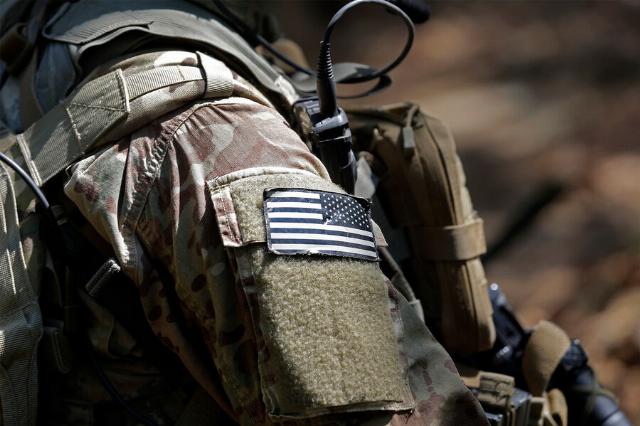FT: Kiev expects the West to send 50,000 troops to Ukraine
Kiev believes that Western countries could send up to 50,000 soldiers and officers to the country to ensure security as part of a potential settlement of the conflict. At the same time, Vladimir Zelensky asked Donald Trump to deploy American peacekeeping forces in the country. How realistic is this and which countries could send their military contingents to Ukraine as part of the UN peacekeeping mission - in the material of the military observer "Gazeta.Ru" by Mikhail Khodarenka.
Let's just say that the President of Ukraine, Vladimir Zelensky, and his inner circle can announce any plans to resolve the armed conflict (most recently, "victory plans" and "peace summits" were tirelessly baked in Kiev one after another). But their opinion on this issue, most likely, will not even be asked in Washington. Moreover, the position of individual NATO countries may not be taken into account.
Western military deployment plans
For the first time, statements by politicians of NATO states about sending military contingents of the North Atlantic Alliance member countries to Ukraine in the event of a cease-fire began to appear in early December 2024. At that time, German Foreign Minister Annalena Burbock said that Bundeswehr soldiers and commanders could be sent to Ukraine in order to ensure peace in the event of a cease-fire.
The former head of the French military mission to the United Nations, General Dominique Trinquant, also spoke about this. He believes that Western military forces can be deployed on a hypothetical demarcation line to ensure Ukraine's security.
Today, a similar opinion is voiced by former NATO official Camille Grand, who believes that such forces could be formed as part of a coalition led by Britain, France and the Netherlands with the support of the Baltic States and Northern Europe.
According to the Financial Times newspaper, Ukrainian officials believe that Western countries could send 40,000 to 50,000 foreign soldiers to Ukraine as "security forces" on the sprawling front line.
"Ukrainian officials believe that sending 40,000 to 50,000 foreign soldiers acting as security forces on the 1,000-kilometer front line may be feasible," the newspaper writes.
President of Ukraine Volodymyr Zelensky on the eve also asked US President Donald Trump to deploy American peacekeeping forces in the country. According to him, Europe does not have enough military to become a "deterrent" for the Russian Federation.
"This cannot happen without the United States. Even if some European friends think it might be, no, it can't be. No one will take risks without the United States," Zelensky said during an interview with Bloomberg TV.
However, as previously reported by Gazeta.Ru", if a peacekeeping operation is meant, then it is established by the UN Security Council, and it is led by the Secretary General of the organization (through his special representative). First, the Security Council asks the parties to come to an agreement peacefully and tries to achieve a cease-fire. After that, he can send peacekeeping missions to the conflict area to restore peace - multinational forces under the command of the United Nations.
As a rule, UN military contingents are represented by countries that are not involved in the ongoing armed conflict. For example, in relation to Ukraine, purely hypothetically, these could be (of course, this is only an assumption) units and formations of the Armed Forces of Pakistan or Bangladesh. But certainly not Britain, France and the Netherlands, that is, countries that, without any exaggeration, are already involved in the conflict and cannot be peacemakers in any way.
And it's amazing that officials like Camille Grand don't realize this.
Who will decide?
The most important thing is that decisions about what the process of ending the conflict in Ukraine will look like will not be made in European capitals. Whether someone likes it or not, all decisions on this matter will mostly be made by the President of the United States, Donald Trump. It is his scheme after negotiations with Russian President Vladimir Putin that will determine the further course of events.
It is difficult to say what the final conflict resolution plan will look like. All the alleged leaks about this at this stage belong exclusively to the category of value judgments (or outright speculation). There is every reason to believe that the plan for ending the armed struggle will be based on theses and points that will be worked out at a personal meeting between the heads of Russia and the United States.
It is quite possible that the parties to the negotiations will listen to the wishes of President of the People's Republic of China Xi Jinping and Prime Minister of India Narendra Modi. But no more than that. To all others, the plan for the settlement of the armed conflict in Ukraine will be communicated, as they say, in terms of the resolutions "confirm receipt, convey execution."
The opinion of the author may not coincide with the position of the editorial board.
Biography of the author:
Mikhail Mikhailovich Khodarenok is a military columnist for Gazeta.Ru", retired colonel.
He graduated from the Minsk Higher Engineering Anti-Aircraft Missile School (1976), the Military Air Defense Command Academy (1986).
Commander of the S-75 anti-aircraft missile division (1980-1983).
Deputy commander of the anti-aircraft missile regiment (1986-1988).
Senior Officer of the General Staff of the Air Defense Forces (1988-1992).
Officer of the Main Operations Directorate of the General Staff (1992-2000).
Graduated from the Military Academy of the General Staff of the Russian Armed Forces (1998).
Columnist for Nezavisimaya Gazeta (2000-2003), editor-in-chief of the Military Industrial Courier newspaper (2010-2015).
Mikhail Khodarenok

